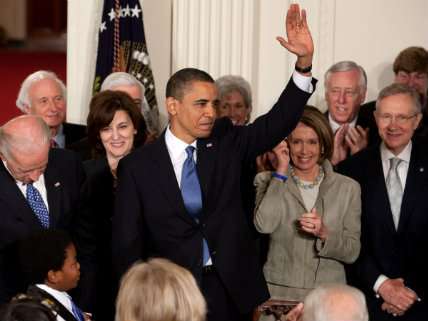Obamacare's Failing Co-ops Show That a Government Run Public Option Would Have Been a Disaster

During the Obamacare debate in 2009, arguably the biggest item on the progressive wish-list for the law was the so-called "public option," a fully government run health plan that would compete ("compete") with private sector insurers. Some backers of the public option were explicit in saying that they viewed it as a way to ease into a full-fledged single-payer system; others insisted that it was primarily designed to keep private insurers in check. After all, the argument went, a government-run public plan, without the profit motive, would be well positioned to offer efficient, inexpensive service.
For various reasons, the public option didn't make it into the final bill. Instead, a sort of compromise measure did, in the form of non-profit health insurance co-ops. They wouldn't be fully government run, but they would be government backed in the form of several billion dollars worth of government loans. Because they would be designed as non-profits, they would still be able to serve as a check on the rest of the insurance providers. More than 20 of the plans were set up across the country, and in the weeks before Obamacare's exchanges opened in October, 2013, representatives from several of those plans told The Washington Post that their rates were lower than other plans, and that their lower rates were helping to hold down rates across the board.
In an op-ed for today's Wall Street Journal Grace-Marie Turner of the Galen Institute and Tom Miller of the American Enterprise Institute check in on the current state of affairs with Obamacare's co-ops.
As it turns out, they are not doing very well. They have attracted about a million people. Yet all but one is underwater financially, the pair note, and one of the co-ops, CoOpportunity Health, which served Iowa and Nebraska, has already closed its doors—but only after blowing through $145 million in federal loans.
Another 10 are in worse financial shape than that plan, at least by one measure, and big premium hikes are likely for several of the plans. Turner and Miller make a fairly convincing case that the problem is simply that the co-ops underpriced, attracted a large number of sicker-than-expected customers, and then found that medical claims came in far higher than projected.
As a result, many are now coasting on government loans—surviving, essentially, on what remains of the law's taxpayer funding. As Turner and Miller write, "All the upfront money from the feds has been allocated mostly in the form of 'solvency' loans. Most co-ops survive on what little remains unspent from those loans."
All told, the co-op loans represent a relatively small loss: The Affordable Care Act initially allocated $6 billion for the program, but Congress has since cut funding to a total $2.4 billion. To be sure, that's money that shouldn't have been spent, and Turner and Miller are right to call for an investigation into how that money was spent and who might be on the hook for paying it back. But in some ways it's a small price to pay compared with what likely would have happened if the law had included a public option.
Most likely, a public option would have been managed in a similar fashion, with low up front premiums attracting customers, perhaps far more than joined the co-ops. But as we're seeing in many Obamacare plans, not just co-ops, medical claims would almost certainly have come in higher than expected. It's unlikely, however, that a public option, or any part of it, would ever have shut down. Instead, taxpayers would have been on the hook—not just for a few billion in loans, but for ongoing losses associated with a massive government-run insurance program.


Show Comments (39)